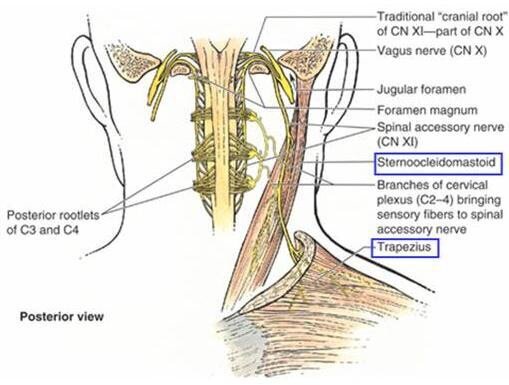The Significance of the Vagus Nerve in PNE
By Judith Johnson and Irma Nippert
The Mediation of the Vagus Nerve
The core of the Central Nervous System (CNS) is the spinal cord and brain. The nerves, ganglia, and sensory receptors that radiate out from this core are called the Peripheral Nervous System (PNS).
The whole nervous system is regulated through the functional operations of the somatic and the autonomic systems. The Somatic Nervous System is directed by our conscious mind and will and our senses, and involves things like the movements of our arms and legs. The Autonomic Nervous System is more deeply directed for the maintenance of our internal landscape and involves things like the regulation of the organs and digestive functions.
Finally, the autonomic function can be divided between the sympathetic and parasympathetic phases of operation, mediated by the vagus nerve. These two phases of operation are crucial to understanding PsychoNeuroEnergetic (PNE) processing.
The Stimulation of the Vagus Nerve
There are actually two vagus nerves; one serves the right side of the body and one the left. The dual vagus nerve, also called the 10th cranial nerve, is the second largest nerve structure, after the spinal column. The vagus nerve contains both myelinated and unmyelinated fibers, which are activated more strongly one way or another depending on a person’s sense of threat or safety in the moment.
The vagus nerve is the only cranial nerve that extends beyond the head and neck, connecting with every organ and gland in the body. It is well represented in the region of the STO points, the primary points that are held in a PNE session. The vagus nerve emerges from the jugular foramen and moves diagonally across the side of the neck toward the front of the body. Along with the vagus nerve (cranial nerve X), the connecting link of cranial nerve XI loops through the jugular foramen and down through the back of the neck. Cranial nerve XI, also called the accessory nerve, innervates the suboccipital muscles.
The STO points are found within the occipital triangle formed by the musculature of the sternocleidomastoid and trapezius muscles, midway between the spinal vertebrae of the neck and the jugular foramen, from which the two cranial nerves emerge. In pressing down and curling the fingers slightly under the occiput, we touch into the edge of these nerves, strongly stimulating them. Thus, information from the internal landscape can be accessed through the vagus nerve and its connections throughout the body, especially within the endocrine system.
The carotid artery also exits through the jugular foramen next to the STO points. Holding the STO points lightly lengthens the neck and positions the head for optimum blood and nerve supply.
Finally, the STO points engage the brain stem (the part of the central nervous system that connects the brain and the spinal cord), stimulating the movement of cerebrospinal fluid, and again, heightened brain/body communication.
The Function of the Vagus Nerve
The vagus nerve provides the core of communication between the PNS and the CNS.
It is the core of the autonomic nervous system—connecting, monitoring, and regulating the functions of organs and glands in communication with the CNS.
It regulates the opposing natures of the sympathetic and parasympathetic systems through unmyelinated and myelinated fibers.
It carries communication from the enteric nervous system (the “second brain” in the gut) to the primary brain in the head. The enteric system is sometimes considered a third division of the autonomic nervous system.
It plays a regulatory role in the expression of emotions and in the Social Engagement System, as described by Dr. Stephen Porges.
It provides communication pathways between the medulla, amygdala, and the hippocampus in accessing frozen energies and source memories.
The Unified Field
When we begin holding points in a PNE session, the first phase typically moves the client’s body into a deeper integrative state. The client begins to access the ventral vagal system, called by Stephen Porges the communication-mamamallian myelinated vagal pathway. The myelinated vagal pathway moves the client into the parasympathetic division of the nervous system, which is the system of rest, digestion, lowered heart rate, safety, and deeper sense of self.
As the integrative process encounters separation or paralysis, the client begins to access the sympathetic nervous system through the holographic sensation, emotion, and memory of the original source of distress. The sympathetic system draws on our reserves of energy to put us on high alert and heightened functional processing and awareness.
As somaticized freeze responses, trapped within the unmyelinated vagal response system, are released, the client moves back toward the relaxation and reintegration of the parasympathetic mode.
Within a session, the client is simultaneously aware of the safety of present circumstances and the threat of past circumstances. Both aspects of the autonomic system—the parasympathetic and the sympathetic—remain accessible. With the potential to move between these two phases and even to be held within a unified field of these dual systems simultaneously, a higher dimensional portal can be accessed for consciousness shifts and transformative healing.
This is a simplified explanation of the mechanics of a session. Still, it serves to indicate that the mediation of the vagus nerve is significant to the power of the STO points in deepening, stabilizing, and opening up the experience of a PNE session.
Resources
For articles by Stephen Porges on the Polyvagal Theory and the Social Engagement System, see http://stephenporges.com
For powerful practical exercises that work with the Vagus Nerve, see Stanley Rosenberg, The Healing Power of the Vagus Nerve: Self-Help Exercises for Anxiety, Depression, Trauma, and Autism (North Atlantic Books, December 2017).

